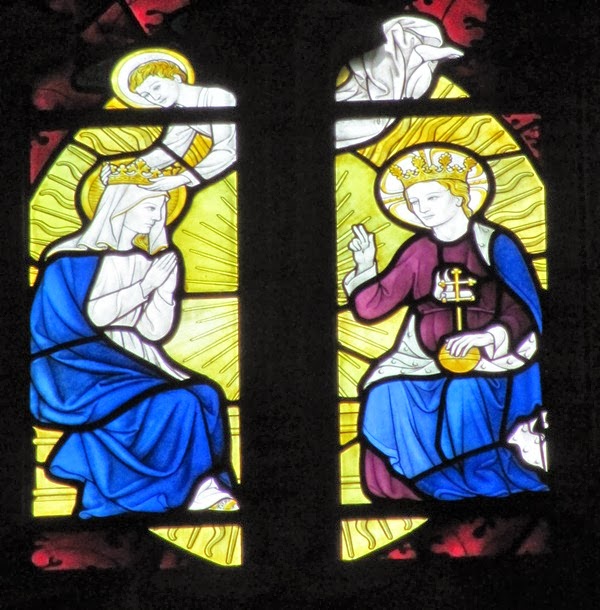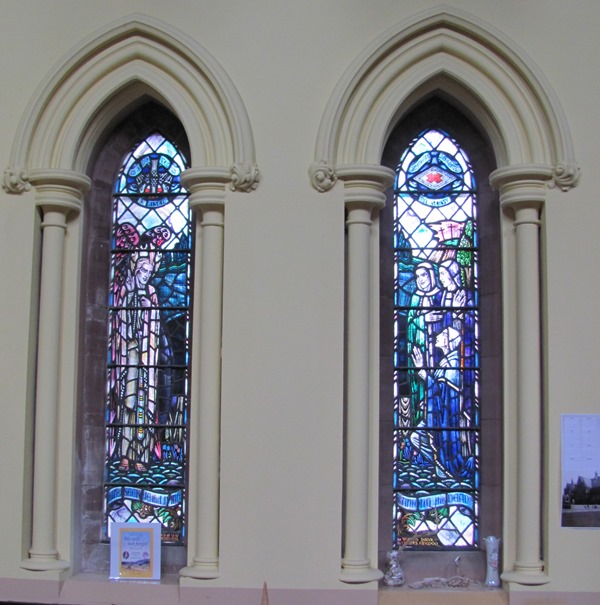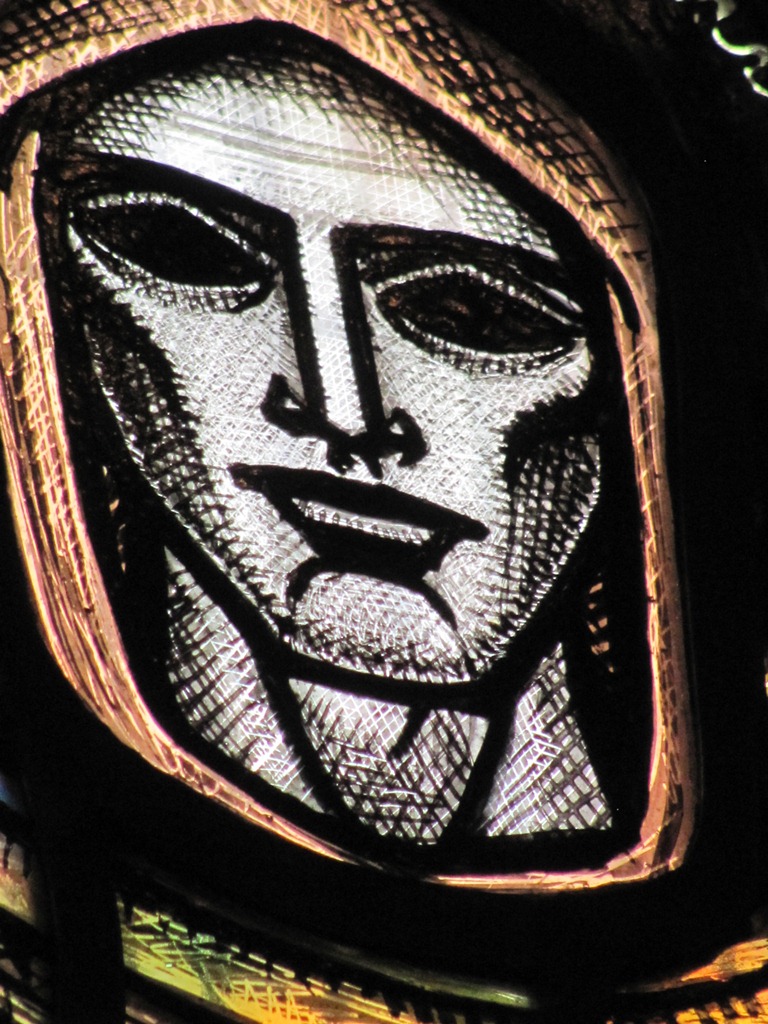On the night of 14th of December 1940 Conventry was bombed by the German air force. The ferocity of the bombing was well beyond what was expected and much of the centre of the city was destroyed, including most famously the cathedral. One church near the cathedral, which got of quite lightly that night, was The Holy Trinity. It didn't get away completely unscaved, it lost it's Great East and West windows. The current East and West windows date from the 1950s.
When I passed by a couple of months ago, there was a service on but you can see from the outside that there's something special about the Great West window, so I went away and had a cup of tea and something to eat and returned later. I was not wrong, the window is a cracker, it was designed by Hugh Easton and was dedicated in 1955.
This board tells you who all the personalities in the window are.
At the other end of the church, the Great East Window perhaps doesn't leap out at you in the same way that the West does. In a more traditional style, it is neither the less a superb window. I can't find an exact year of manufacture or dedication but it was sometime in the 1950s. It has come to be known as the Brides' Window since it was paid for with contributions from married couples in the 1940s and 1950s. It is by Ninian Comper. I fear I have not really done Sir Ninian's window much justice here, I only have a few decent pictures, but I have since seen some more windows by him and will make it up in a few blogs time.
You will notice that Sir Ninian and Hugh Easton both portray Christ as blond and beardless. Not what we normally see - was this requested by the church perhaps?

































































